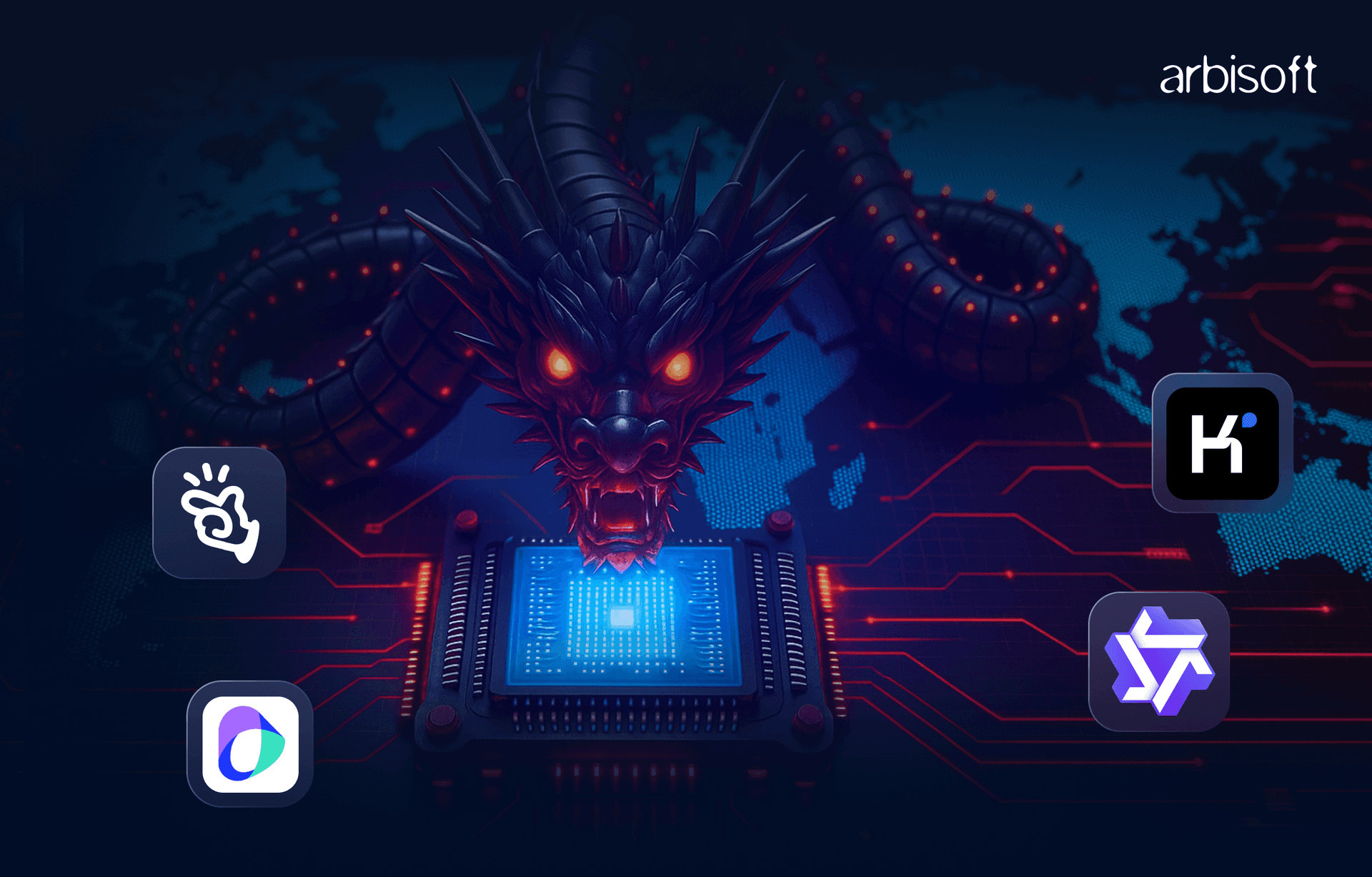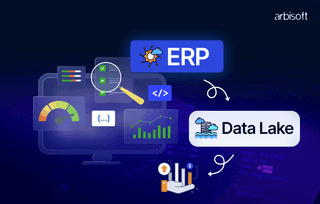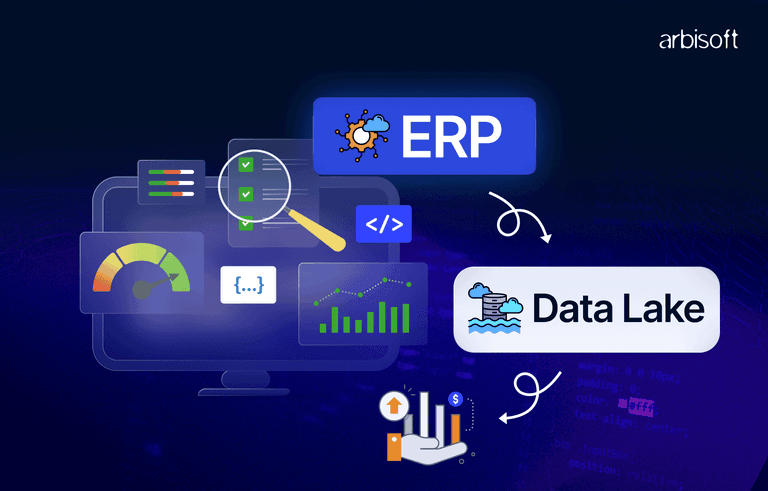We put excellence, value and quality above all - and it shows




A Technology Partnership That Goes Beyond Code

“Arbisoft has been my most trusted technology partner for now over 15 years. Arbisoft has very unique methods of recruiting and training, and the results demonstrate that. They have great teams, great positive attitudes and great communication.”
Chinese AI Models: The Dragon Awakens and Reshapes the Global AI Race

China’s AI industry came to life at the end of 2024. A small startup called DeepSeek surprised Silicon Valley by launching DeepSeek-R1, the reasoning-focused large language model. It performed as well as, or even better than, OpenAI’s latest models at the time on tough tests and benchmarks, and it did so at a much lower cost. In trials, DeepSeek-R1 outperformed big-name models on tests like AIME, MATH-500, and SWE-bench. The model was open-source and built by a small team with less than $6 million in funding. It marked the start of a new age of low-cost, high-performing AI.
But this wasn’t just a tech breakthrough—it was a global event. Just days after its release on January 10, 2025, DeepSeek-R1 became the top app in the U.S. App Store and contributed to the frenzy that shook Wall Street, with tech markets reeling from the Nvidia stock crash and trillion dollar loss. The Nasdaq also fell 5%, losing over $1 trillion. The world quickly saw that powerful AI didn’t need huge budgets or Silicon Valley’s backing. A lean Chinese startup had rewritten the rules of the global AI race.
But DeepSeek was just the beginning. In this blog, we’ll explore how China’s AI revolution unfolded in early 2025—from breakthrough models like Kimi k1.5, Qwen 2.5-Max, and WuDao 3.0 to powerful autonomous agents like Manus AI. We’ll look at how these technologies reshaped the global AI race, shook financial markets, and forced the world to rethink what’s possible.
What You’ll Discover in This Blog
- How Chinese AI models like DeepSeek-R1, Kimi k1.5, and Qwen 2.5-Max are outperforming Western giants on key benchmarks.
- Why low-cost, high-efficiency AI models from China are reshaping the global tech economy.
- The rise of autonomous AI agents like Manus AI and what they mean for the future of work.What the world can learn from China’s AI strategy—and how it challenges Silicon Valley’s dominance.
Let’s dive into the key players, their innovations, and the lessons we can learn from China’s rapid rise in AI.
1. Kimi k1.5: The Silent Challenger
While the dust was still settling from DeepSeek’s arrival, another Chinese contender stepped forward. Moonshot AI, a Beijing-based firm, introduced Kimi k1.5—the AI model challenging global giants, a multi-modal AI model built to tackle text, math, coding, images, and videos. Kimi quickly made headlines by outperforming GPT-4o, Claude Sonnet 3.5, and even DeepSeek-R1 on certain benchmarks.
What made Kimi special wasn’t just its raw performance and how it was trained. Kimi used a hybrid method. First, it learned from well-picked, detailed reasoning examples through supervised fine-tuning. Then, it improved itself using reinforcement learning. This two-step process helped Kimi get really good at solving tough problems in different formats.
Kimi was also very flexible. It scored 77.5 on AIME, 96.2 on MATH-500, and reached the 94th percentile in Codeforces. For tasks that involved images, it got top marks on MathVista and MMMU. It could search the web in real time, work with 50 types of files, and was completely free to use with no limits.
Its creators didn’t just want to win on benchmarks. They built it to solve real-world problems, like writing reports, checking code, or making social media posts. In many ways, Kimi was made to be a smart helper for working professionals. And unlike most Western AI models, Kimi was completely free to use.
2. Doubao 1.5 Pro: ByteDance’s Cost-Effective Contender
On January 22, 2025, ByteDance joined China’s AI surge with Doubao 1.5 Pro, a model built for deep reasoning at a low cost. It used a Sparse Mixture-of-Experts (MoE) design, activating only the parts it needed for each task. This made it faster and far cheaper than many dense models while still matching or beating GPT-4o and Claude 3.5 Sonnet on key benchmarks.
Doubao 1.5 Pro worked across text, vision, and speech, handled long documents with its 256,000-token context window, and excelled in complex tasks like legal analysis and reading comprehension. Best of all, it was about five times cheaper than DeepSeek and used low-cost hardware, proving that smart design can beat big spending.
3. Qwen 2.5-Max: Alibaba’s Power Move
Alibaba Cloud didn’t want to fall behind, so it launched Qwen 2.5-Max—Alibaba’s extraordinary AI model on February 10, 2025, right on the Lunar New Year. This model was a big step forward for Alibaba’s AI goals. Unlike older versions, Qwen 2.5-Max also used a Mixture-of-Experts (MoE) design. This means it only turned on the parts it needed for each task, which made it faster and more efficient without losing performance.
Qwen 2.5-Max was trained on more than 20 trillion tokens, making it one of the biggest AI models ever. The result? It beat other models like GPT-4o, DeepSeek-V3, and Anthropic’s Claude 3.5 on almost every test. On the Arena-Hard benchmark (which tests how well a model follows instructions), it scored 89.4. On MMLU-Pro (which checks graduate-level reasoning), it came close to the top. It also did very well on LiveCodeBench and general knowledge tests, proving it’s good at many things.
The model could do more than just understand text. It could also analyze images, watch and understand videos, and even control apps, putting it in the same category as OpenAI’s advanced multimodal models. Qwen 2.5-Max was available through Alibaba Cloud’s API and Qwen Chat, so both businesses and individuals could use it easily.
While DeepSeek and Kimi were made by startups, Qwen showed how big tech companies in China are joining the AI race, bringing lots of money, strong infrastructure, and massive scale.
4. Manus AI: China’s Autonomous Agent
In March 2025, the AI world witnessed yet another innovation, Manus AI—China’s first fully autonomous AI agent. It was the first fully autonomous, general-purpose AI agent, created by a Chinese startup called Monica. Manus wasn’t just another chatbot. It could take action. You could ask it to plan a five-day trip, review a stock portfolio, or screen job resumes. It would do the research, make decisions, take steps, and give you the results on its own.
Manus used a system made of multiple smaller agents, each with its own job, like gathering data, analyzing it, or making a report. It worked online and didn’t need you to stay logged in. You could give it a task and come back later. It would finish everything while you were away or even asleep.
In one demo, Manus opened 50 browser tabs at once, pulled data from Telegram and X, and made a market report in under 10 minutes. It could also build websites from scratch, put them online, and fix problems, all without any human help.
The team behind Manus said it did better than OpenAI’s DeepResearch on the GAIA benchmark. It’s already caught the eye of both investors and regulators. While people see it as a major step toward smart automation, it also brings up concerns about privacy and rules. For now, you need an invite to use it, and it’s the most talked-about tech tool right now.
To better understand how these and other large AI models work and why they matter, check out our blog on The Evolution, Impact, and Future of Large Language Models.
These were some of the Chinese AI models that grabbed the spotlight in 2025. But China’s AI journey didn’t start this year. Long before these models made headlines, earlier models like GLM-4 Plus and WuDao 3.0 laid the foundation. They didn’t get as much attention as Kimi or Deepseek, but they played a big role in shaping China’s AI progress. Let’s have a look at these models.
5. WuDao 3.0: BAAI’s Open-Source AI for Startups
WuDao 3.0 was launched by the Beijing Academy of Artificial Intelligence (BAAI) in mid-2023. Instead of building one huge model, BAAI created a set of smaller, open-source models called Wu Dao Aquila. The idea was to help startups and small companies build their own AI tools without spending too much money.
WuDao 3.0 supports both Chinese and English, so it can be used by more people. It works with both text and images, which makes it useful for chatbots, image analysis, and content creation. The AquilaChat model helps create smooth and natural conversations. AquilaCode can turn text into code, which is helpful for developers. WuDao 3.0 can also create images from text and understand pictures, which is great for design and media work.
One of the biggest benefits of WuDao 3.0 is that it is cost-efficient. Its smaller models use less power and fewer GPUs, which lowers energy and hardware costs. Since it is open source, there are no license fees, so startups can use it for free. WuDao 3.0 also showed strong results in many tasks. It did better than GPT-3 on few-shot learning, beat OpenAI’s CLIP on image classification, and created better images from text than DALL-E.
6. GLM-4 Plus: Zhipu AI’s Versatile Powerhouse
Zhipu AI entered the race with GLM-4 Plus, also launched in mid-2024, as a model focused on deep reasoning, long-text processing, and advanced conversations. Using Proximal Policy Optimization (PPO), it excelled in math, coding, and complex reasoning, matching or even surpassing GPT-4o and Claude 3.5 Sonnet on key benchmarks.
GLM-4 Plus stood out for its multi-modal abilities, handling both text and high-resolution images, and supporting 26 languages for global reach. It processed up to 1 million tokens, ideal for long legal or technical documents, and integrated tools like code execution and web browsing. Cost was another advantage: it ran on smaller GPUs, trained for a fraction of what it cost to build GPT-3, and was fully open-source, making it one of the most efficient large models available.
Shockwaves in the Global Market
The cumulative effect of the big Chinese AI models shook the global tech economy. On January 27, 2025, Nvidia faced its biggest single-day loss ever, losing nearly $600 billion in market value. The Nasdaq dropped by 5%. Big tech companies like Alphabet and Microsoft also lost billions in value.
This made investors worry. They started to question if traditional U.S. companies, which had spent tens of billions on chips and data centers, could stay competitive. DeepSeek had trained its R1 model using mid-range Nvidia chips, not the expensive H100s. If a company could match GPT-4-level performance without spending huge amounts of money, then why pay hundreds of millions?
Sam Altman from OpenAI admitted that DeepSeek’s low-cost approach was “impressive.” But the market was still shaken. There were even rumors that Apple’s M2 Ultra chip might offer an even cheaper alternative to Nvidia’s GPUs. With each new AI release from China, U.S. tech firms were forced to rethink their plans.
The Bigger Picture: China’s AI Strategy
These fast changes didn’t happen on their own. China has been working toward becoming a leader in AI since it launched the “New Generation AI Development Plan” in 2017. The goal of this plan is to make China the top country in AI by 2030.
Since then, the government has invested a lot of money in research, education, chip making, and building technology infrastructure. Chinese AI models, whether from startups like DeepSeek or big companies like Alibaba, get strong support from the state and often follow national plans. For example, the public promotion of Manus on state-run media showed clear government support.
At the same time, the U.S. is also pushing forward with major projects like Stargate -$500 billion AI project, which costs billions. But the difference is clear. Stargate is focused on building huge infrastructure, while DeepSeek created a high-level AI model with a very small amount of money. This isn’t just a race to be first; it’s a battle of two different approaches: using a lot of resources vs. being smart and efficient.
Lessons from Chinese AI Models
China’s fast rise in AI isn’t just a headline; it’s a blueprint with powerful lessons for the rest of the world. Here’s what we can learn from it:
1. Smart Design Beats Big Budgets
DeepSeek-R1 was built by a small team with under $6 million. Instead of relying on giant data centers and expensive chips, it used a smarter training method, reinforcement learning, to teach itself complex reasoning. This shows that companies don’t need billions to build great AI. They need clever strategies.
2. Open-Source Can Compete With the Best
By releasing R1 as open-source, DeepSeek gave the world a powerful tool for free. This disrupted the idea that only closed, expensive models like GPT-4 can lead the race. Open-source AI models, when done right, can be just as strong, and much more affordable for users and developers.
3. AI Must Handle More Than Just Text
Kimi k1.5 and Qwen 2.5-Max are both multimodal. They can read, write, analyze images, watch videos, and even interact with software. That’s a big shift. The most useful AIs of the future won’t just be chatbots; they’ll understand the world like humans do, through many kinds of information.
4. People Want AI That Takes Action
Manus AI isn’t just a model that gives answers. It does things for you like booking flights, writing reports, or managing a project. This new kind of AI saves time by completing full tasks on its own. It marks the beginning of a new wave of AI: one that works like a real assistant, not just a smart tool.
5. U.S. Tech Leadership Isn’t Guaranteed
The crash of Nvidia’s stock and the $1 trillion market dip after DeepSeek’s launch prove one thing: AI leadership can shift quickly. China showed that it can build models that rival, or even beat, U.S. giants, and do it faster and cheaper. This puts pressure on Silicon Valley to move faster and spend smarter.
6. Government Strategy Makes a Big Difference
China’s success isn’t luck. It comes from years of planning. Since 2017, the country has been investing in AI research, education, and infrastructure. That support helped companies like DeepSeek, Moonshot, and Alibaba grow fast. Countries without a clear AI plan could fall behind.

So, What’s Next for Chinese AI Models?
From DeepSeek’s disruptive debut to the emergence of autonomous agents like Manus, China’s ascent in AI is no longer a prediction; it’s a reality. In just a few months, Chinese firms introduced models that matched or exceeded global leaders, triggered a trillion-dollar market reaction, and challenged the very foundations of AI development.
So, what happens next? Western tech giants must adapt or risk being outpaced. Policymakers must weigh the benefits of open AI against the need for oversight. And the rest of the world must ask: Are we prepared for a future where AI is not just American, or Western, but truly global?
The AI dragon has awakened. And it’s not going back to sleep; a reminder for innovators and those looking to hire AI developer expertise to stay ahead in this evolving landscape.
























